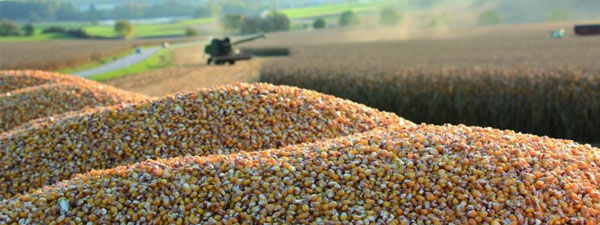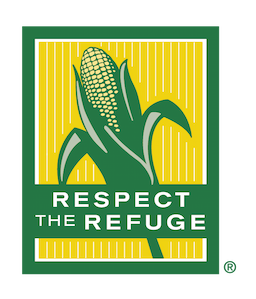Top 10 Tips for Corn Yields
January 10, 2019

Best management practices (BMPs) go a long way to help growers secure the best yields and return on investment when growing corn. While there are many factors involved in achieving top yields, the following top 10 tips can help growers add bushels and profits and wind up with the best corn yield outcomes:
1. Test soil fertility
Test soil fertility levels annually, or at least every other year, preferably in the fall. Add phosphate and/or potassium to help boost corn yields when soil tests indicate the need2. Proper nitrogen fertilizer practices are critical for high-yielding corn3. Determine the best nitrogen rate and timing by balancing the rate of uptake needed for the crop to thrive during key growth times and how much nitrogen can be lost during wet weather.
2. Research hybrid selections
Select hybrids from more than one maturity and genetic group for risk management and to spread out the workload at planting and harvest time. Research hybrids with consistently high-yield corn ratings, good standability and appropriate maturity ratings for your area. Always consult your local seed dealer and review performance ratings of various hybrids from university extension trials that match your individual farming needs1.
3. Control key pests with seed genetics and traits
Plant hybrids that have shown good yield trial results, plus your tried-and-true hybrids. Seed genetics with built-in herbicide tolerance traits can significantly enhance control of a broad range of tough-to-manage grasses and broadleaf weeds. Diversify hybrid choices to spread risk with a range of maturities and insect and disease susceptibilities.
4. Protect corn early with seed treatments
Invest in a seed treatment to protect against diseases, insect pests and nematodes to get young corn plants off to a good start. To protect against early-season pests such as corn rootworms, wireworms, white grubs and chinch bugs, as well as provide broad-spectrum protection against nematodes, consider a systemic seed treatment component along with a biological for root protection and additional modes of action for dual protection.
5. Consider optimal planting dates
Consider geography, weather and individual field conditions such as drainage when deciding when to plant. Recommended planting dates for corn tend to range from early April to early May4. Spring weather can change quickly from cool and wet to dry and warm. “Mudding in the seed” can result in the loss of valuable time spent struggling with stuck equipment, such as tractors and planters. It can also put you at risk for yield reduction due to poor stands and can cause soil compaction issues later in the season.
6. Check seeding rates
Follow your seed company’s recommendations because there are many variables, such as soil types, different hybrid maturity dates and yield potential on various soil types. Seeding rate decisions are best made field-by-field. Also, consider row width when determining seeding population.
7. Invest in season-long weed control
Manage grass and broadleaf weeds early. Plant into weed-free fields using pre-plant and pre-emergence residual herbicides. Always aim to control weeds before they reach 3 inches in height. Larger weeds are more difficult to control and compete more tenaciously with corn seedlings for sunlight, soil, water and other nutrients. If weed escapes happen, stay clean with an effective post-emergence herbicide.
Bayer has a broad herbicide portfolio to combat tough-to-control and resistant weeds.* A well-thought-out herbicide program, using multiple sites of action and nonchemical practices, should be implemented. Before applying any herbicide, please read the entire label for the best possible results and to confirm that the product is effective on the weeds you wish to control.
When managing corn crops for high yields, remember it’s always best to start with a clean field. Start with an Autumn™ Super(2)** herbicide application in the fall, and the following spring use TriVolt™ herbicide (2, 15, 27) as a pre-emergence herbicide to control early-season problem weeds. Built with a proprietary formula, TriVolt Herbicide provides burndown and residual activity in a variety of weather conditions.
8. Protect plant health with fungicides
Proactively plan to use fungicides to manage for optimum plant health. Planned fungicide use helps prevent disease pressure from negatively impacting yields, especially in a no-till situation with higher residue or in fields that were planted to corn the year prior.
A well-thought-out disease-management program, including best management practices, proper seed protection, and selection and fungicide applications using multiple modes of action should be implemented to sustainably manage diseases.
Achieve your personal best yield with help from Delaro® Complete fungicide from Bayer. Delaro® Complete Fungicide offers unique chemistries in all three modes of action.
Three modes of action provide consistent control of major corn and soybean diseases under many different environmental conditions.
Before applying any fungicide, please read the entire label for the best possible results and to confirm that the product is effective against the disease you need to control. Not every product is suitable for every situation, and correct application technique will ensure the best results.
9. Scout early to proactively manage key pests
Check fields early and often for emerging weeds, diseases and insects to help guide treatment decisions and economic thresholds5. Follow extension reports to proactively manage outbreaks that may happen in your area. Season-long management of weed, disease and insect pests in corn will aid your goal for best return on investment at the end of the growing season.
10. Focus on resistance management practices
Use diversified management practices to manage resistance to herbicides, fungicides and insecticides. Select products from different classes of chemistries that address multiple, effective sites of action. Refer to sources such as Herbicide Resistance Action Committee (HRAC), Fungicide Resistance Action Committee (FRAC), Insecticide Resistance Action Committee (IRAC) and Take Action6,7,8,9. Extension and cultural practices such as tillage and crop rotation can also help.
Proactive resistance management can best be achieved by implementing a two-pass program to manage weeds. A recommended two-pass program starts with a pre-emergence application of Corvus herbicide. The second pass should include a postemergence product such as Laudis® herbicide (27). If using Laudis following an application of Corvus, add another effective herbicide with a different mode of action, such as DiFlexx® DUO(4) herbicide or atrazine, to ensure you are using multiple modes of action in your weed control.
Capreno® herbicide (2, 27) is another postemergence herbicide option for corn from Bayer. It has the longest-lasting residual of any post product on the market. With multiple modes of action, Capreno controls more than 65 grasses and broadleaves, including those resistant to glyphosate, PPO, ALS, dicamba and triazines.
To learn more about using herbicides with effective modes of action, refer to the Herbicide Resistance Management Guide. To explore the recommendations of Respect the Rotation™, the Bayer resistance management program, contact your local Bayer sales representative or talk to your regional agronomist.
Bayer offers a broad portfolio of season-long products to help corn growers achieve the highest possible yield and grain quality. Read the entire label for best results and to confirm the product is effective on the pests you need to control. Choose the best products to control your specific pests and achieve the best yield outcome.
*Always read and follow label instructions and confirm the product is effective on the pests you need to control. Not all products are registered for use in every state. Not every product is suitable for every situation, and correct application techniques will ensure the best results.
** Denotes SOA group
For information on a portfolio of products from Bayer to help maximize yields and protect crops, contact your local Bayer representative.
ALWAYS READ AND FOLLOW PESTICIDE LABEL DIRECTIONS.
TriVolt™ is a restricted use pesticide. Not all products are registered for use in all states and may be subject to use restrictions. The distribution, sale, or use of an unregistered pesticide is a violation of federal and/or state law and is strictly prohibited. Check with your local dealer or representative for the product registration status in your state. Autumn™, Bayer, Bayer Cross, Capreno®, Delaro®, Laudis® and TriVolt™ are trademarks of Bayer Group. For additional product information call toll-free 1-866-99-BAYER (1-866-992-2937) or visit our website at www.BayerCropScience.us. Bayer CropScience LP, 800 North Lindbergh Boulevard, St. Louis, MO 63167. ©2024 Bayer Group. All rights reserved.
Sources:
1. “Purdue Crop Performance Program.” Why Do We Use GMOs?, ag.purdue.edu/agry/PCPP/SitePages/pcppCorn.aspx.
2. Daniel Kaiser, et al. “Fertilizing Corn in Minnesota.” University of Minnesota Extension, 2018, extension.umn.edu/crop-specific-needs/fertilizing-corn-minnesota.
3. “Nitrogen.” University of Minnesota Extension, extension.umn.edu/nutrient-management/nitrogen.In-text Citation “Field Crops: Usual Planting and Harvesting Dates.” USDA, National Agricultural Statistics Service, USDA, 2010, usda.mannlib.cornell.edu/usda/current/planting/planting-10-29-2010.pdf.
4. “Field Crops: Usual Planting and Harvesting Dates.” USDA, National Agricultural Statistics Service, USDA, 2010, usda.mannlib.cornell.edu/usda/current/planting/planting-10-29-2010.pdf.
5. Krupke, Christian. “Corn Integrated Pest Management Guide.” Field Crops IPM, Purdue University Extension, extension.entm.purdue.edu/fieldcropsipm/corn.php.
6. Hrac. “PROTECTING CROP YIELDS AND QUALITY WORLDWIDE.” Herbicide Resistance Action Committee, hracglobal.com/.
7. “FRAC | Mechanisms of Fungicide Resistance.” FRAC | Introduction to the Phenylamides - FRAC Expert Fora, www.frac.info/resistance-overview/mechanisms-of-fungicide-resistance.
8. “Insecticide Resistance Action Committee.” IRAC, www.irac-online.org/.
9. “Take Action: Pesticide-Resistance Management.” Take Action, https://www.iwilltakeaction.com






